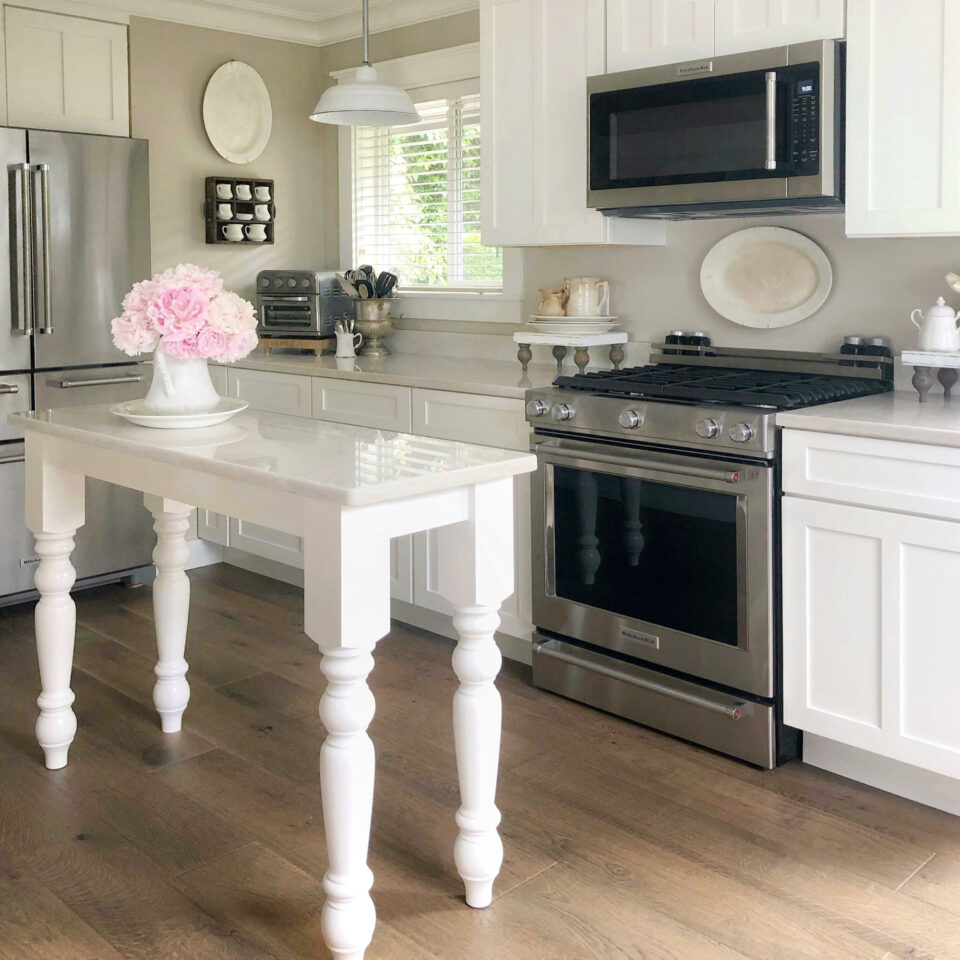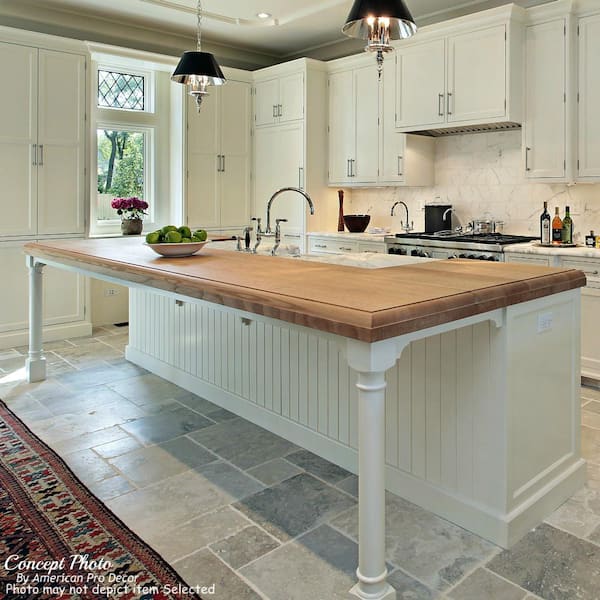The Relevance of a Sturdy Kitchen Island Leg in Producing a Practical Food Preparation Area
A strong kitchen island leg works as an essential component in developing a functional food preparation atmosphere, giving needed assistance for both the kitchen counter and various kitchen tasks. The stability it supplies can dramatically decrease the danger of mishaps in high-traffic locations, while likewise adding to the total aesthetic coherence of the area. As kitchen areas advance right into multifunctional locations for food preparation, eating, and interacting socially, the choice of materials and style factors to consider for island legs comes to be increasingly essential. Understanding these elements can transform your cooking area into a much safer and much more reliable location, motivating more expedition into the ideal alternatives readily available.
Advantages of Sturdy Island Legs
Giving important assistance, strong kitchen island legs play a critical duty in improving the functionality and toughness of cooking area islands - kitchen island leg. These legs not only bear the weight of the countertop and any extra items put on the island, but likewise add to the total stability of the structure. A well-supported cooking area island makes sure that it continues to be useful and upright, even under heavy usage, which is specifically vital in active kitchen settings
Furthermore, durable island legs can boost the visual charm of the kitchen area. They give a solid structure that can match various design styles, from contemporary to conventional. This versatility permits homeowners to personalize their cooking area islands according to individual taste while making sure that the architectural integrity stays uncompromised.
Along with their encouraging duty, durable cooking area island legs can also improve security. A secure island minimizes the risk of accidents brought on by tipping or tottering, which is especially vital in families with kids or elderly people. Solid legs can help with a seamless flow of activities, allowing for efficient meal preparation and social communications within the kitchen room. Eventually, purchasing sturdy kitchen area island legs is necessary for a useful and aesthetically pleasing cooking area.
Products for Kitchen Area Island Legs
When selecting materials for cooking area island legs, longevity and aesthetic appeal are essential factors to think about. One of the most typical products include wood, metal, and crafted timber, each offering one-of-a-kind benefits.
Wood, such as cherry, maple, or oak, is a timeless selection as a result of its stamina and timeless beauty (kitchen island leg). It can endure substantial weight and is immune to wear, making it perfect for high-use kitchen area environments. In addition, hardwood can be tarnished or repainted to match various cooking area styles
Steel legs, frequently crafted from stainless steel or functioned iron, supply a modern and commercial look. They are extremely strong and can support considerable loads while being immune to dampness and heat, which is advantageous in a cooking location. Steel legs can likewise be conveniently cleaned, enhancing their usefulness.

Style Considerations for Security
The selection look here of products for kitchen area island legs directly affects the design considerations for stability. When designing a cooking area island, it is paramount to evaluate the weight-bearing capability of the chosen materials. Larger products, such as solid timber or metal, typically give higher stability, specifically under the stress and anxiety of everyday use.
Furthermore, the leg layout have to include appropriate geometry to enhance stability. A bigger base boosts the support area, lessening the risk of tipping or tottering. Factor to consider must also be offered to the height of the legs; out of proportion leg lengths can bring about discrepancy, compromising the general stability of the island.
Furthermore, the circulation of weight throughout the island is vital. Guaranteeing that the leg positioning aligns with the heaviest elements, such as appliances and counter tops, will certainly even more boost stability.
Maintenance Tips for Durability

Depending on the material of the legs-- whether wood, steel, or composite-- proper cleansing approaches should be used. Steel legs might call for a light gloss to avoid rust and preserve their luster.
In addition, tightening up screws and screws consistently can ensure stability and prevent wobbling. Take into consideration strengthening the legs with extra brackets or sustains to improve sturdiness if the kitchen island experiences hefty use. Last but not least, applying a protective finish or sealant can protect against moisture and stains, lengthening the life-span of the legs. By adhering to these maintenance ideas, home owners more information can guarantee their kitchen area island legs remain durable and practical for several years ahead.
Choosing the Right Leg Design
Routine upkeep makes certain that cooking area island legs stay strong and useful, however choosing the right leg design is just as crucial for both looks and assistance. The option of leg style can dramatically influence the overall design and consistency of your kitchen area.

Functionality is one more critical aspect. Thicker legs or those with a sturdy base can support heavier counter tops and tools, boosting the island's utility. Alternatively, slender legs might develop an airy appearance, appropriate for lighter designs however possibly much less supportive.
Final Thought
In summary, the significance of durable kitchen area island legs can not be overstated in the development of a practical cooking area. These legs supply crucial assistance, boost stability, and contribute to the total aesthetic of the kitchen area.
A tough kitchen island leg offers as a fundamental part in developing a functional food preparation environment, giving needed assistance for both the kitchen counter and numerous kitchen area activities.Giving vital assistance, strong cooking area island legs play a pivotal role in improving the capability and longevity of kitchen islands. Inevitably, investing in durable kitchen area island legs is important for a useful and visually pleasing cooking area.
Factor to consider must likewise be offered to the height of the legs; out of proportion leg lengths can lead to inequality, compromising the general stability of the island.
Wooden legs site here give warmth and a traditional appearance, while metal legs use a industrial and contemporary feeling.